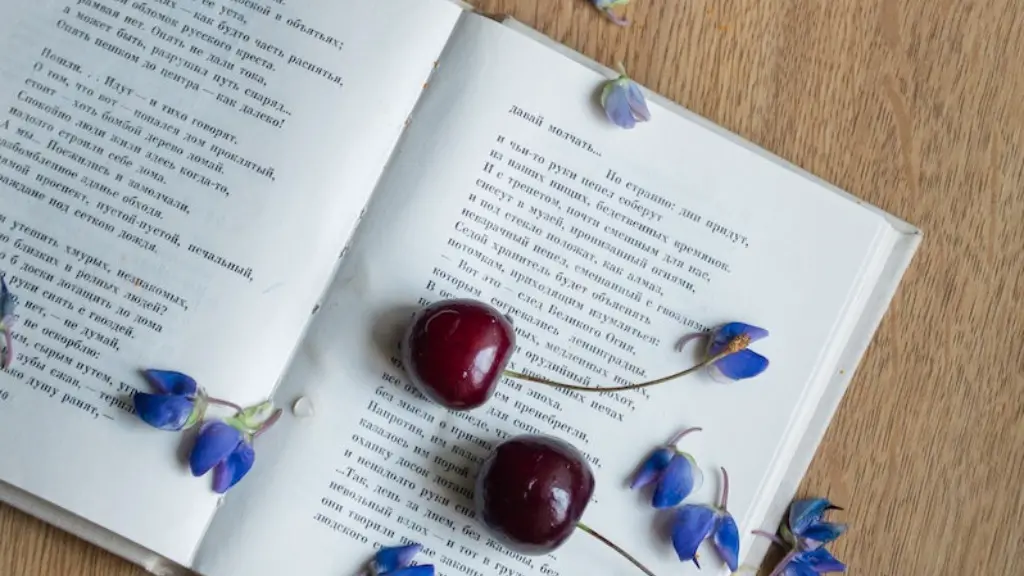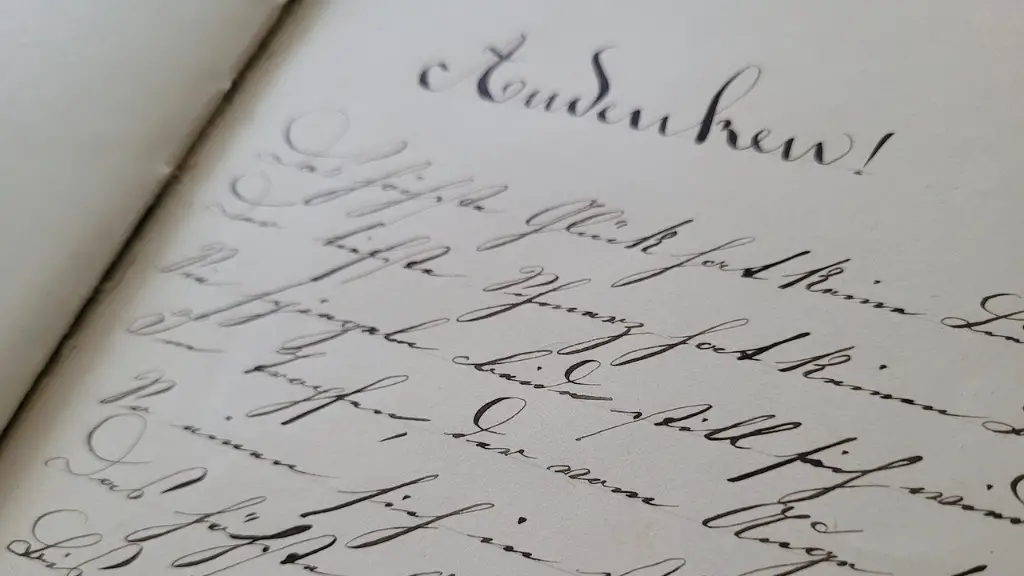Introduction
Poetry is often seen as a creative and inspiring way to express feelings and emotions, and when incorporated into an essay it can have a powerful effect. It can create an atmosphere that will inspire and engage the reader, while also providing a source of raw information. When done properly, using poetry in an essay can make it much easier to convey complicated messages and point out deeper truths that can’t be put into words. However, many people don’t understand how to effectively put poetry into an essay. This article aims to provide an overview of how to put poetry in an essay, from choosing the right poem to properly formatting it to convey the desired message.
1. Choosing the Right Poem
The first step when using poetry in an essay is to find the right poem. The poem should be relevant to the essay’s topic, and should contain a message that can be used to add depth and clarity to the essay’s argument. Poems can come from various sources, such as authors, poets, and anthologies. Additionally, some poems may be able to be adapted to better fit the essay’s topic. For example, if the essay is about love, a poem about nature could be adapted to focus on love for the natural world, and how it can inspire or affect people.
2. Analyzing the Poem
It’s important to fully understand the poem and its meaning before attempting to put it into an essay. This involves looking for the poem’s underlying message, its imagery, and its diction. To do this, try reading the poem aloud, or reading it multiple times from different perspectives. When analyzing the poem, examine its structures, such as stanzas, lines, and metaphors. Understanding the underlying message and symbolism of the poem will better help when deciding how to incorporate it into the essay.
3. Incorporating the Poem Into Your Essay
Once the poem is analyzed, it’s time to decide how to incorporate it into the essay. It can be used as an introduction to add emotion, or as a transition to help explain the essay’s message. Additionally, the poem can be used as evidence, to emphasize a point, or to engage the reader. To make the poem more effective, find ways to naturally include it in the essay, such as using its language or elements from the poem to transition.
4. Making Connections
The poem should be used as a way to bridge the ideas in the essay for a better understanding. Once the poem is selected and incorporated, look for ways to make connections between the poem and the essay. For example, look for metaphors and symbols in the poem and use them in the essay. By doing this, readers can gain a better understanding of the essay’s message and make connections from the poem to the essay.
5. Formatting the Poem
The way the poem is formatted also has an effect on how it’s perceived. One option is to quote the entire poem, as it will help to emphasize the poem’s message and keep the readers’ focus on the poem. This option works well if the poem is intentional and adds relevant insight to the essay. But if the poem isn’t the focus of the essay, it can be broken up and spread throughout the essay, or the poetic elements can be integrated into the essay itself.
6. Using Emotional Triggers
When incorporating poetry into an essay, it’s important to take advantage of the potential to evoke emotion in the reader. Poetry can be a powerful tool to help engage the reader and create a deeper connection to the essay’s message. Utilizing emotional words and imagery will help to bring the essay to life, and capture the attention of the reader.
7. Exploring Multiple Perspectives
Poetry provides a chance to explore multiple perspectives. Incorporating multiple voices, such as the poet’s and the reader’s, will create a more engaging essay. This could involve analyzing the poem from different angles and asking questions to challenge the reader and engage with the poem. By doing this, readers will gain a richer and more complex understanding of the poem, and be able to uncover more meaningful insights.
8. Writing in the Active Voice
Rhetorical questions, strong verbs, and active voice can help to bring the poem to life and make it more engaging. Instead of using the passive voice, the active voice will help to create a stronger connection to the poem and the essay. This will also add emphasis to the poem and create a sense of energy.
9. Expanding the Topic
When putting poetry into an essay, it’s important to remember that the poem is only a part of the whole. To create a more dynamic and compelling essay, look for ways to expand upon the poem, such as discussing its implications and possible interpretations. Additionally, looking at the poem’s historical and cultural context can help to uncover more relevant and meaningful ideas.
10. Creating a Flow
When putting poetry into an essay, it’s important to remember to create a flow between the poem and the essay itself. To do this, look for ways to bridge the poem and the essay’s message, such as finding common themes or symbols. Additionally, look for opportunities to create contrast within the essay, so the poem stands out and is given attention.
11.Use of Imagery
Imagery is often used in poetry to create vivid scenes and evoke emotion in the reader. When incorporating poetry into an essay, it’s important to look for ways to convey this imagery in order to bring the poem to life. Taking advantage of imagery can also help to create an emotional connection between the essay and the poem, which will help to engage the reader and create a more compelling essay.
12. Maintaining Coherence
When using poetry in an essay, maintaining coherence is essential. It’s important to make sure that the poem flows naturally with the essay, instead of feeling forced or out of place. This can be accomplished by making sure the poem and the essay have the same general tone and message. Additionally, looking for opportunities to contrast the poem and the essay can help to create a more unified and cohesive essay.
13. Exploring Rhyme and Meter
Rhyme and meter are often used in poetry to add meaning and emphasis to words and lines. When incorporating a poem into an essay, it’s important to pay attention to these elements and how they affect the overall meaning of the poem. Additionally, looking for opportunities to emphasize words and lines through rhetoric can make the essay more engaging.
14. Adding a Reflection
When incorporating a poem into an essay, it can be helpful to end the essay with a reflection. This can be done by considering the poem’s implications and how it relates to the essay’s overall message. This can help to bring the essay to a meaningful conclusion and provide the reader with something to ponder.
15. Incorporating Personal Insights
Finally, when using poetry in an essay, it’s important to add personal insights. This can be done by exploring the poem from a personal perspective and analyzing its implications. Additionally, looking for ways to bridge the poem and the essay’s message can add more depth to the essay and provide readers with a more meaningful understanding of the essay’s message.




